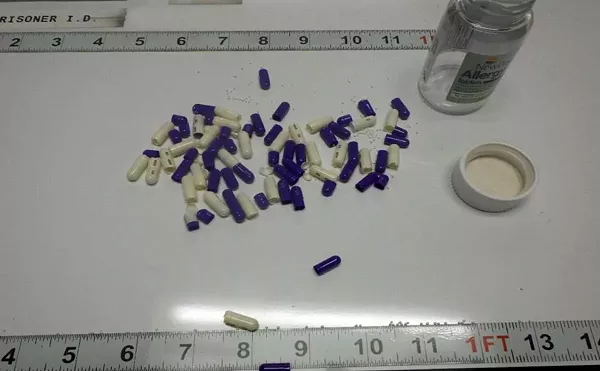
Rip-offs, known by economists as “market inefficiencies,” are cases in which the price of something has little to do with its actual value. They are particularly common in industries where oligopolistic conditions dominate, which has been increasingly common since deregulation fever hit Washington. In today’s marketplace, the consumer is often a sheep to be shorn. Here are seven common products where the buyer must beware.
College Textbooks: A Rip-Off
As if kids trying to get an education don’t face enough financial hurdles, the textbook industry has found a way to soak them on every class. A $200 biology book? A couple of Benjamins for a math text that doesn’t even come with binding? That’s the new normal.
The National Association of College Stores reports that the average college student ends up paying about $655 for textbooks and supplies annually.
All told, there’s been an 812 percent increase in the price of college textbooks since 1978. No, you didn’t misread that number. And you thought healthcare was going up!
You may recall buying used books in college or sharing and saving some money that way. But greedy textbook companies have found a way around that. They’ve rigged up access codes in new books that the student must use in order to do things associated with the class, like take an online quiz or turn in a homework assignment. The code can only be used one time, so the book loses a great deal of its usefulness after the semester.
Mattresses Scams
Are icky little bugs filling up your bed? Oprah did a show on it. The Wall Street Journal warns that, “the average mattress will double its weight in 10 years as a result of being filled with dead dust mites and their detritus.”
Eeek!
Cecil Adams over at Straight Dope looked up the claims, and found that scientists don’t buy it: “It’s nonsense,” said mite authority Larry Arlian, professor of biological sciences, microbiology, and immunology at Wright State University. “I don’t know where that originated. They’re not that prolific.”
Most people aren’t even allergic to dust mites, and there are ways of countering them, like putting impervious covers on mattresses and pillows, that don’t require shelling out thousands of dollars.
Simple solution: Get a cover for the mattress you have, flip it around to keep it even, and vacuum regularly.
Tampons: Pay-as-you-Flow
If you are a woman reading this article, you will likely drop a couple thousand bucks on tampons in your lifetime. It is said that menstruating Americans go through an average of 11,400 tampons in their lives: That’s five tampons a day, five days a month, for 38 menstruating years.
Researcher Karen Houppert calls it “pay-as-you-flow.” When you see the various ways women get ripped off, you understand why. It may gall you, for example, to hear that unlike condoms, tampons and other sanitary products are taxed in many states. Yes, tampons are considered a luxury item instead of a necessity. When I was profusely bleeding during a recent trip to Brazil and couldn’t find a store, my situation certainly felt like a necessity! I’m sure you know the feeling.
Over the years, you may have noticed the number of tampons in a box has dropped (from 40 to 32 in 1991, for example) while the price stayed the same. The major players in the tampon business, Procter & Gamble (Tampax), Playtex, Kimberly-Clark, and Johnson & Johnson, have well over 90 percent of the market.
I’m not going to sugarcoat this. There are alternatives, but they can be more, uh, hands-on.
Printer Ink: The Dark Truth
It’s a classic marketing scheme. You sell one product, like a printer, at a rock-bottom price, essentially losing money. Then you turn around and sell everything else that you need to use that product at a giant markup. You may have gotten your printer cheap, but the ink and toner that make it work are super-costly.
The folks at MainStreet.com found some amazing research: “The website DataGenetics crunched the numbers and came to a shocking conclusion: Assuming a cartridge sells for $16.99, the 19 milliliters of ink it contains amounts to nearly $65,000 a gallon.” That is very likely the most expensive liquid you will ever purchase. The cost of one gallon of ink is the same as 2,652 gallons of gasoline!
If you don’t do a ton of printing, you might consider a slightly more expensive printer that won’t waste ink and will not break down. Also, if you print a lot, you may want to leave the printer on, because every time you turn it on you trigger that ink-wasting maintenance cycle.
Bottled Water: Giant Scam
It’s become the accessory-of-choice for urbanites on the go. But here’s the reality: bottled water is expensive, wasteful and probably not any healthier than tap water.
You may feel safe thinking that bottled water in the U.S. falls under the regulatory authority of the Food and Drug Administration. But in reality, as Chris Baskind reports, “about 70 percent of bottled water never crosses state lines for sale, making it exempt from FDA oversight.”
And what is in that water? Who knows? There’s certainly no guarantee that your tap water is pristine, but at least I can look up my water and see how it is treated, read what violations have occurred and review dates for follow-up actions. Can you do that on a bottle of water? No, you can’t.
Generics vs. Brand-Name
Sometimes generics are a money-saver, like prescriptions drugs, or over-the-counter medications, which are legally required to list their ingredients and adhere to the same standards as brand-name products. If you need a pain reliever, grab yourself the generic brand and save a buck.
Beyond medicines, lots of times there’s not much difference between generic and brand-name products. Often the very same item, like, Reynolds Wrap, can be found repackaged as house brands.
But generic is not always your best bet. Large chain supermarkets have started selling “second tier” brands that may be lower in quality, with names like “Kroger Value” and “Food Lion’s Smart Option.”
This trend is on the upswing, so expect more products to fall under this category and be sure to check ingredients and pay attention to performance.
Germ-Fighting Supplements
Every time I go to my gym, I see somebody fighting the war on germs; wiping down any equipment they touch with treated towelettes and vigorously rubbing their hands. On the playground, moms and dads are continually swiping Junior with antimicrobial cleansers.
Scrupulous or stupid? Nobody wants to pick up a germ that will make her sick, but products that claim to fight germs and boost the immune system don’t amount to much in the way of health. They are also a waste of money
Try basic hygiene: Soap and water!
Lynn Stuart Parramore is a contributing writer to the Metro Times and a senior editor at AlterNet. Send comments to letters@metrotimes.com.






